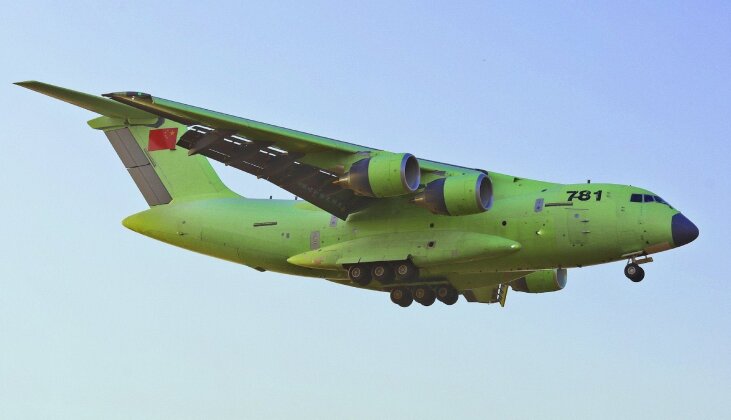News
China Brings New WS-20 Turbofan Engines Into Service For Y-20 Transports: A Major Boost to Airlift Capabilities
The Shenyang WS-20 turbofan engine has reportedly been made ready for operational service, with the powerplants expected to enhance the capabilities of the country’s indigenous airlifter the Xi’an Y-20. Images of a Y-20 in the colours of the Chinese People’s Liberation Army integrating these engines have been widely shared on Chinese social media sites, where previously aircraft integrating such engines were painted only in yellow primer indicating they were still in testing status. The PLA Air Force’s 37th Air Regiment based at Kaifeng Air Base, which operates both Y-8C and Y-20A transports, is thought to have been the first to have integrated the new Y-20 variant – which is speculated to be designated the Y-20B. The Y-20 is the world’s largest transport aircraft in production worldwide, and demonstrated its value in April 2022 when six of the aircraft were deployed for a major airlift of HQ-22 air defence systems to Serbia. This came at a time of high tensions in Europe, and when Serbia as one of just two states on the continent outside NATO’s sphere of influence needed to receive new defence systems quickly. The aircraft made a conspicuous appearance four months later delivering aid to Pakistan after it experienced major flooding, and was also deployed to return the remains of Chinese personnel from South Korea.

The Y-20 has formed the basis for developing an airborne tanker, the YY-20, which was previously erroneously known as the Y-20U. The first of the aircraft began combat readiness training in August 2022, and are expected to form the backbone of a new aerial refuelling capability which will extend the reach of China’s already very long ranged combat aviation. Integration of indigenous engines and a phasing out of Russian engines is a trend which has been seen across Chinese military aviation, and notably accelerated in 2022, with growing numbers of J-10 and J-11 fighters re engined with the Chinese WS-10 and phasing out the Russian AL-31 powerplants. Although the Soviet Union led the world in turbofan engine development in the 1980s, with ambitious programs such as the AL-41F, post Soviet Russia has proven far more limited in its ability to make advances in the field allowing Chinese powerplants to show growing signs of a performance lead. The WS-20 is expected to not only facilitate a larger scale of production of Y-20 airframes, but also improve their flight performance with lower operational costs and greater endurance and reliability. The Chinese engine will allow the Y-20 to achieve its maximum 66 ton cargo capacity, which it was unable to do using the Russian D-30KP-2 powerplant that has equipped airframes built up until now. The WS-20 notably shares technologies with the WS-15 fighter engine which is expected to soon replace the older WS-10C in powering Chinese J-20 fifth generation stealth fighter units, and which began flight testing on the J-20 in 2022.












